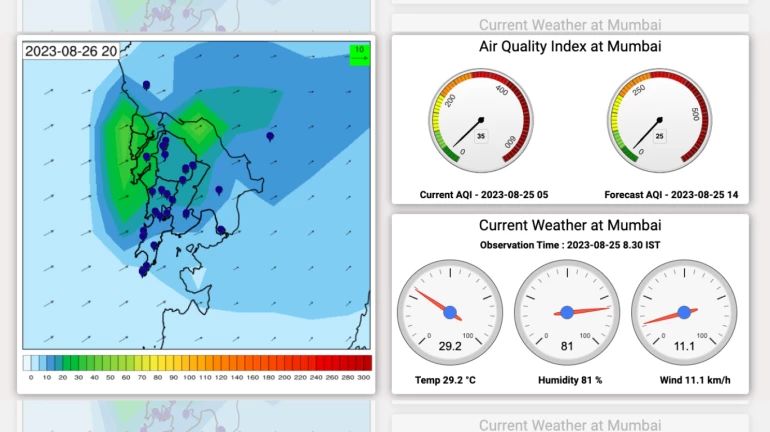
Residents from Mumbai Metropolitan Region (MMR) who were severely impacted early this year due to high levels of air pollution can be better prepared this winter season.
Citizens can now access the Air Quality Early Warning System (AQEWS) on the Indian Institute of Tropical Meteorology (IITM) portal to understand the real time and forecasted data on pollution levels in the city. A presentation of which was given by the at the India Clean Air Summit (ICAS) 2023, organised by the Center for Study of Science, Technology, and Policy (CSTEP).
A dedicated website (https://ews.tropmet.res.in/mumbai/index.php) puts together to deliver detailed historical information, real time data as well as forecasts on the contribution of PM2.5 and PM10 emissions across 24 locations in Mumbai Metropolitan Region (MMR).
Addressing the session at ICAS 2023, Ghude explained that this portal will help the citizens be prepared and choose their activities during the winter season when mostly the air quality deteriorates. “Using this site, the health impacts of severe air pollution can be avoided by citizens, especially senior citizens and children or those vulnerable to respiratory ailments,” he added.
IITM has integrated satellite data on Aerosol Optical Depth (AOD - measure of the effect of aerosols polluting the air) from an extensive network of 420 air quality monitoring stations across India for such early warning systems, which are currently present in Delhi, Pune, Ahmedabad, Bengaluru, Kolkata and Mumbai.
Other than government agencies utilising sensors to monitor air quality, participation of citizens using Low Cost Sensors (LCS) will further help in gathering data from multiple locations for an effective action plan.
In the MMR, a total of 24 monitoring stations have been installed at various locations. Within the Greater Mumbai limits there are 20 air quality monitoring stations, some of them are at Navy Nagar, Malad West, Borivali East, Deonar, Powai, Mulund West, Bandra Kurla Complex and Chakala. The balance four are at Mahape, Vasai, Nerul and Kalyan.
Dr. Pratima Singh, Senior Research Scientist, Air Quality, CSTEP, said, “More sensors are required to monitor every neighbourhood. Citizen science can play a crucial role with the housing societies taking the initiative to install Low Cost Sensors (LCS). Given the high accuracy level and reliability of LCS, citizens can participate by reducing emissions themselves and becoming responsible towards cutting down on air pollution and eventually improving their health. Authorities can also cover more ground through LCS to mitigate air pollution problems in a shorter time frame.”
For this year’s India Clean Air Summit (ICAS) event, the Center for Study of Science, Technology, and Policy (CSTEP) partnered with the Indian Aerosol Science and Technology Organisation. ICAS2023 put the spotlight on pollution and its linkages to climate change and various sustainable development goals (SDGs) to help practitioners in the field explore opportunities for aligning clean air goals with climate policies. Prioritising clean air in the SDGs and in India’s policies for climate action is paramount, having acknowledged air pollution’s contribution to climate change and witnessing the aggravating impacts of climate change.





